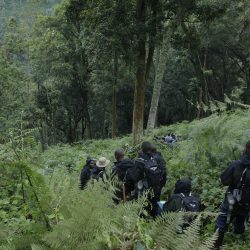IGCP Position on Nteko-Buhoma Road Construction
Blog | 26/04/21
IGCP has learned about the recently launched construction of Nteko-Buhoma road to connect Kisoro and Kanungu districts through Bwindi Impenetrable National Park by Uganda National Roads Authority (UNRA) and the local community as published by the Daily Monitor.
While it is a noble cause aimed at easing transport for the surrounding park communities and boosting local development, there is dire need to ensure that the project, if pursued, will not disrupt and cause irreversible damage to the native fauna and flora of the area and what is considered to be critically important, and irreplaceable, habitat for the Endangered mountain gorilla, chimpanzee and other species.
Bwindi Impenetrable National Park is a UNESCO World Heritage Site with ecological and associated socio-economic benefits that must be sustained and preserved. The IGCP coalition will continue to work with Uganda Wildlife Authority and local partners to monitor the process and ensure that a robust and evidence-based Environmental and Social Impact Assessment (ESIA) is conducted, and its recommendations duly followed.
The proposed new road will significantly impact connectivity of Bwindi Impenetrable National Park with the contiguous Sarambwe Nature Reserve in neighbouring Democratic Republic of Congo. This area is a known transboundary home range for the mountain gorillas, chimpanzees and other species, the ESIA and associated consultations should be conducted with this in mind, with the involvement of counterpart institutions and stakeholders in DRC.
IGCP together with Conservation Strategy Fund previously published a financial analysis of a related road construction project (Ruhija – Ikumba road) in and around Bwindi Impenetrable National Park as part of the USAID-funded Biodiversity Understanding in Infrastructure and Landscape Development (BUILD) project led by the Uganda National Environmental Management Authority. While the analysis was for a different proposed road improvement, it does provide a benchmark against which similar complex projects should be assessed in order to uphold the integrity of the UNESCO World Heritage Site.
For more information about the impact of infrastructure on great ape conservation, please see the State of the Apes: Infrastructure Development and Ape Conservation published by the Arcus Foundation together with this Policy Brief outlining key recommendations for best practice.




